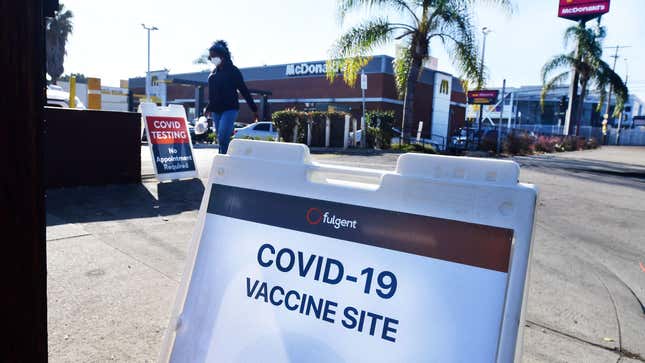
The head of the World Health Organization is warning against pandemic hubris. On Monday, WHO director-general Tedros Adhanom Ghebreyesus cautioned that Omicron may not be the last important variant of the pandemic to appear and that talk of a pandemic “endgame” is still premature. At the same time, he was optimistic that this could be the last year of the pandemic’s “acute” phase, so long as important goals like vaccinating 70% of the world’s population are reached.
He made the comments during an executive board meeting today, the AP reported. Amid discussion of global health issues like climate change, antibiotic resistance, and tobacco use, Ghebreyesus talked about the near future of the covid-19 pandemic.
“There are different scenarios for how the pandemic could play out and how the acute phase could end. But it’s dangerous to assume that Omicron will be the last variant or that we are in the endgame,” Tedros said.
The Omicron variant emerged late last November and quickly overtook the previously dominant Delta variant to become the primary circulating form of the coronavirus worldwide, including in the U.S. Though Omicron has turned out to be milder on average than Delta, it has been more capable of sickening people with prior immunity, and many countries have had to face a resurgent peak of illness this winter.
Vaccines are still blunting the impact of Omicron, though, and countries with very high vaccination rates have experienced a much smaller to no increase in deaths during their latest peaks than in the past. Less vaccinated regions like the U.S. haven’t been so fortunate; over the weekend, the U.S. reported one of its deadliest days of the pandemic to date, with more than 3,500 deaths (even now, though, some of these deaths may have been from the Delta variant, which was widely circulating before Omicron).
Cases in the U.S. and other areas hit hard by Omicron are beginning to decline from their peaks. And some experts have expressed optimism that once this latest peak ends, the U.S. and the world will be in much better shape moving forward. Importantly, however, this expectation is at least partly contingent on the assumption that Omicron will be the last major headache we have to deal with in the near future—and that isn’t a sure thing, according to Tedros. “On the contrary, globally, the conditions are ideal for more variants to emerge,” he said. Indeed, while Omicron is still the main threat around, there are still other variants of interest that could cause trouble.
That said, there’s reason to be hopeful. There could be several new and effective covid-19 treatments and vaccines available this year, including a vaccine explicitly meant for the low- and middle-income countries where vaccination rates are lowest. And should the world reach the 70% vaccination rate recommended by agencies like the WHO by the middle of this year, 2022 could very well be the end of covid-19 being a “global health emergency,” Tedros said. These vaccines should ideally be given to those at the highest risk of severe covid-19. And vaccination should be part of a wider effort to mitigate the pandemic, which will also need to include testing and surveillance programs to keep an eye out for potential new variants. Currently, just over 60% of the world has received at least one covid-19 vaccine dose, though less than 10% of those in the poorest countries have.
As many scientists and countries have also acknowledged, Tedros noted that covid-19 isn’t going away anytime soon, even once the pandemic is over. “But learning to live with covid cannot mean that we give this virus a free ride,” he added. “It cannot mean that we accept almost 50,000 deaths a week from a preventable and treatable disease.”